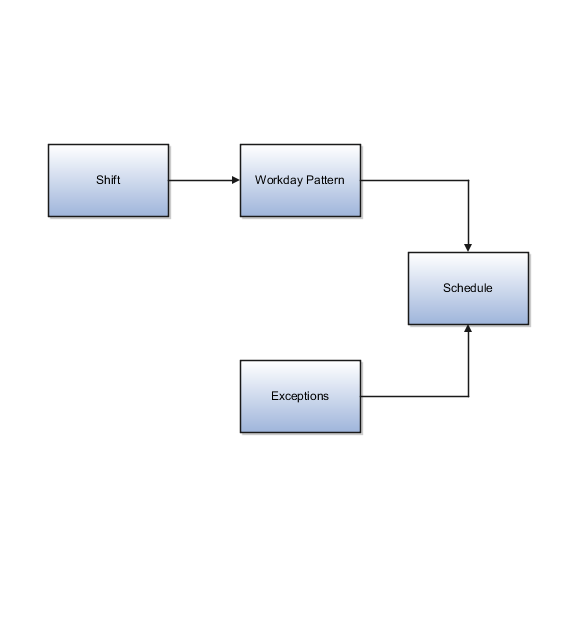Schedule Components
Schedules are comprised of workday patterns, any nonworking days, and exceptions.

Shift
A shift is a period of time, typically expressed in hours, and defined by a start time and an end time, or a duration. A shift can be for a work period or an off period. You can create time, duration, and elapsed shifts.
Workday Pattern
A workday pattern is a collection of shifts for a specific number of days. You can create time, duration, and elapsed workday patterns.
Exception
An exception is a record of a date that overrides the availability of a resource to which a schedule has been assigned. For example, a resource is assigned a schedule that includes December 25 as a working day. An exception can be created for December 25 and then applied to that schedule to override resource availability for that date. Exceptions can also be for a date and time period such as 9 a.m. to 11 a.m. on December 25th.
Schedule
A schedule is defined by a sequence of workday patterns to be followed between certain dates. A schedule can also contain exception dates that override the availability of resources to which the schedule is assigned.
When defining a schedule, in addition to the effective dates, you can set additional options such as:
- Marking a schedule as active.
- Setting the first day of the week to specify which day is the start of the week in cases where the schedule doesn’t model weekends and has 7 working days each week.
- Adding quarter types such as 4-4-5 or 4-5-4.